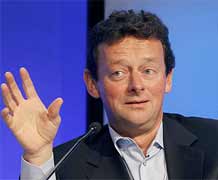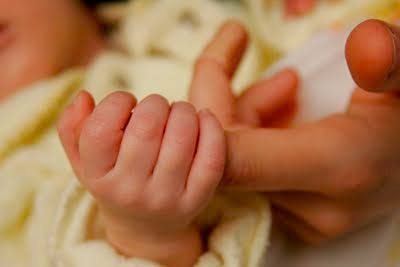Biblio
Molly Ivins has written about how the EPA was virtually dismantled as the Bush-Cheney administration handed over the role of oil and gas regulation to the oil and gas industry. While Governor of Texas, Bush allowed Texas industry to voluntarily comply with Federal Clean Air Regulations. Of the hundreds of Texas companies that might have volunteered, according to Ivins, only three did.
Bushwhacked by Molly ivins offers a critique of the presidency of George W. Bush, describing how the same flawed policies he used to govern Texas have affected health and safety standards, the economy, and the environment.
Paul Krugman. Strictly Business. Bushwhacked: Life in George W. Bush’s America Book Review. The New York Review of Books. November 20, 2003.
Chapter 9 of Bushwhacked, by Molly Ivins and Lou Dubose, entitled “Dick, Dubya, and Wyoming Methane,” tells you all you need to know about the Bush Interior Department.
We learn, in particular, that J. Steven Griles, the deputy secretary—and probably the real power in the department—has spent his career shuttling back and forth between being a government official and lobbying for the extractive industries.
And he has never worried much about ethical niceties—little things like recusing himself from decisions that affect his former clients. Moreover, Griles isn’t likely to be disciplined, even when he brazenly supports industry interests over the judgments of government experts.
After all, just about every other senior official at Interior, including Secretary Gale Norton, has a similar résumé. So it’s a very good bet that the new rules on mining-waste disposal don’t reflect a careful economic analysis of the pros and cons.
See: Ed Swartz: The Grass Isn't Growing
See: Stripping the West, a NOW Converstion with Bill Moyers.
See C-Span Book TV Oct. 2, 2004. Bushwacked: Life in George W. Bush's America. Read Chapter: "Dick, Dubya, and Wyoming Methane." (152)
See: U.S. Environmental Protection Agency (EPA): Hydraulic Fracturing Study (2010-2012)
Bruce Baizel. Testimony presented to the Committee on Environmental Protection, James F. Gennaro, Chair, Council of the City of New York, September 10, 2008. Earthworks Publications. Durango, CO.
"My testimony will first address the three main risks to water posed by gas development: well drilling and production, hydraulic fracturing and transportation of fluids to and from the wellsite. I will then briefly describe some specific incidents that illustrate these risks in a number of different states. Then, I will briefly discuss the current New York regulations most applicable to the risks associated with gas development. Finally, I will present some of the approaches that other municipalities and states have developed to try to address these risks."
Bruce Baizel is Senior Staff Attorney for the The Oil and Gas Accountability Project, a program of Earthworks, P.O. Box 1102, Durango, Colorado 81302.
See: Lustgarten (2009) "Buried Secrets: Gas Drilling’s Environmental Threat - ProPublica"
by Abrahm Lustgarten, ProPublica - April 7, 2010.
Series: Buried Secrets: Gas Drilling's Environmental Threat.
A federal study of hydraulic fracturing set to begin this spring is expected to provide the most expansive look yet at how the natural gas drilling process can affect drinking water supplies, according to interviews with EPA officials and a set of documents outlining the scope of the project.
The research will take a substantial step beyond previous studies and focus on how a broad range of ancillary activity – not just the act of injecting fluids under pressure – may affect drinking water quality.
The oil and gas industry strongly opposes this new approach. The agency’s intended research "goes well beyond relationships between hydraulic fracturing and drinking water," said Lee Fuller, vice president of government affairs for the Independent Petroleum Association of America in comments (PDF) he submitted to the Environmental Protection Agency.
See 22 page Powerpoint, Hydraulic Fracturing Applicability of the Safe Drinking Water Act and Clean Water Act Science Advisory Board Discussion.(2010).
Photo by Alex Wong | Getty Images. See source here.
Amicus Curiae
Faith Based organizations offer information relevant to the Supreme Court deliberation on the matter of Connecticut vs. American Electric Power. 2011-03-18.
Amici curiae are fourteen faith-based organizations that are active participants in the ongoing attempt to respond to global climate change and have a strong interest in developing limits on greenhouse gases, which are the primary cause of global climate change.
Amici represent a broad spectrum of Catholic, Protestant, and Jewish communities. Although they differ on many matters of faith and policy, they are united in their concern about threats to the environment. They believe that human beings are stewards of God’s Creation and that humans have a moral obligation to prevent and mitigate harm to the planet, to our fellow humans, and to all of God’s creatures.
An amicus curiae (also spelled amicus curiæ; plural amici curiae) is someone, not a party to a case, who volunteers to offer information to assist a court in deciding a matter before it. The information provided may be a legal opinion in the form of a brief (which is called an amicus brief when offered by an amicus curiae), a testimony that has not been solicited by any of the parties, or a learned treatise on a matter that bears on the case. The decision on whether to admit the information lies at the discretion of the court. The phrase amicus curiae is legal Latin and literally means "friend of the court".
See: Gas Drilling Discussion (Suggested Agenda for) : Biblical and Theological Considerations
...The U.S. Environmental Protection Agency has vetoed the largest single mountaintop removal permit in West Virginia history.
The move is part of an Obama administration crackdown aimed at reducing the effects of mountaintop removal coal-mining on the environment and on coalfield communities in Appalachian — impacts that scientists are increasingly finding to be pervasive and irreversible.
The final EPA decision document is available here. EPA has also now posted some appendices to that document, including a response to comments.
EPA officials this morning were alerting West Virginia’s congressional delegation to their action, and undoubtedly preparing for a huge backlash from the mining industry and its friends among coalfield political leaders.
Comment (65 comments posted as of 1/14/11 1:04 P.M.) posted by rhmooney3. Jan. 13, 2011 at 1:33 P.M.
...I believe the mining industry, the entire business community and all the states want this to move through the federal courts to the U.S. Supreme Court...
P.S. As a result of this EPA action, mining companies have no choice than to play ball with the EPA — in making this decison the EPA has made a lot of other decisions yet to come.
W.Va. Senator Joe Manchin said:
Today’s EPA decision is not just fundamentally wrong, it is an unprecedented act by the federal government that will cost our state and our nation even more jobs during the worst recession in this country’s history.
While the EPA decision hurts West Virginia today, it has negative ramifications for every state in our nation, and I strongly urge every Senator and every Member of Congress to voice their opposition.

Peter S. Silva, EPA’s Assistant Administrator for Water
EPA Press Release:
CONTACT:
Jalil Isa (News Media Only)
isa.jalil@epa.gov
202-564-3226
202-564-4355
FOR IMMEDIATE RELEASE
January 13, 2011
EPA Halts Disposal of Mining Waste to Appalachian Waters at Proposed Spruce Mine: Agency cites irreversible damage to clean water, environment in the region.
WASHINGTON – After extensive scientific study, a major public hearing in West Virginia and review of more than 50,000 public comments, the U.S. Environmental Protection Agency (EPA) today announced that it will use its authority under the Clean Water Act to halt the proposed disposal of mining waste in streams at the Mingo-Logan Coal Company’s Spruce No. 1 coal mine.
Background on Clean Water Act Section 404(c)
Clean Water Act Section 404(c) authorizes EPA to restrict or prohibit placing dredged or fill material in streams, lakes, rivers, wetlands and other waters if the agency determines that the activities would result in “unacceptable adverse effects” to the environment, water quality, or water supplies. This authority applies to proposed projects as well as projects previously permitted under the Clean Water Act although EPA is not considering such action for other previously permitted projects.
With today’s (Jan. 13, 2011) action, EPA has exercised its Section 404(c) authority only 13 times in its history of the CWA. EPA recognizes the importance of ensuring that its Section 404(c) actions are taken only where environmental impacts are truly unacceptable and will use this authority only where warranted by science and the law.
Ken Ward Jr. says:
Arch Coal hasn’t responded to my query yet, but the New York Times has these comments from a company spokeswoman:
John Broder. Jan. 13, 2011. NYT. "Agency Revokes Permit for Major Coal Mining Project".
“We remain shocked and dismayed at E.P.A.’s continued onslaught with respect to this validly issued permit,” said Kim Link, the company’s spokeswoman. “Absent court intervention, E.P.A.’s final determination to veto the Spruce permit blocks an additional $250 million investment and 250 well-paying American jobs.”
“Furthermore, we believe this decision will have a chilling effect on future U.S. investment,” she added, “because every business possessing or requiring a permit under Section 404 of the Clean Water Act will fear similar overreaching by the E.P.A. It’s a risk many businesses cannot afford to take.”
Ken Ward, Jr. is a staff reporter for the Charleston Gazette, who has been nationally recognized for his writing on the coal mining industry. He is Chair of the Society of Environmental Journalists First Amendment Task Force, founded in 2002 to "to address freedom-of-information, right-to-know, and other news gathering issues of concern to the pursuit of environmental journalism."
See: WATER: Rulings Restrict Clean Water Act, Foiling E.P.A. | Mixplex
See: Lisa P. Jackson, EPA (lisapjackson) on Twitter | Mixplex
See: New WVU-Va Tech study links water quality and cancer deaths in West Virginia coalfields
See: Ecological integrity of streams related to human cancer mortality rates
President Bush delivers his 2006 State of the Union address, where he famously stated that “America is addicted to oil.” AP/Pablo Martinez Monsivais
Rebecca Lefton includes a timeline: 2001-2008 of the Bush Presidency's corrupt energy policy.
BP’s oil disaster in the Gulf of Mexico is without a doubt former Vice President Dick Cheney’s Katrina. President George W. Bush and Cheney consistently catered to Big Oil and other special interests to undercut renewable energy and energy efficiency initiatives that would set the United States on a more secure clean energy path.
Oil companies raked in record profits while benefitting from policies they wrote for themselves. These energy policies did nothing for our national security and left consumers to pay the price at the pump and on their energy bills, which rose more than $1,100 during the Bush administration.
See: The Bill From Bush’s Broken Energy System
Read also: The Prelude to Cheney's Katrina by Joshua Dorner

Photo: UC Santa Barbara Geography Department. The Deepwater Horizon oil spill in the Gulf of Mexico as seen from space by NASA's Terra satellite on May 24, 2010. The spill has yet to be contained and is the worst oil spill in US history.

View of the Macondo well leaking oil in the Gulf of Mexico.
The subject of gas drilling in the Marcellus may be looked at in its historical, legal and scientific contexts. The need to heal the ineffective and mistrustful relationship between environmentalists, the U.S. government and the international energy industry concerning the preservation of American air and water becomes more urgent by seeing images like these.
See: Kara Cusolito. The Nation. "The Next Drilling Disaster".
On Sunday, Sept. 26, a committee of the National Academy of Engineering and National Research Council that is conducting an analysis of the causes of the Deepwater Horizon explosion and oil spill held a public meeting to hear from Mark Bly, group head of safety and operations for BP, and other company representatives about BP's recently released accident investigation report. Also on the agenda were executives from Halliburton and Shell Oil.
- Photos
- Webcast Audio Part 1 (Opening Remarks, BP Presentation)
- Webcast Audio Part 2 (Q&A with Committee and BP)
- Webcast Audio Part 3 (Halliburton Presentation and Q&A)
- Webcast Audio Part 4 (Shell Presentation and Q&A)
- Meeting Agenda
- Project Information
See: "More Questions About BP’s Limited Investigation Into Gulf Disaster".
See: Dave Cohen. Energy Bulletin. "Shale Gas Shenanigans."
See: National Commission on the BP Deepwater Horizon Oil Spill and Offshore Drilling
See: The Questions BP Didn’t Answer
See: Tracking the Oil Spill in the Gulf | Interactive Map
For more on the estimates, see these articles:
May 14: Size of Oil Spill Underestimated, Scientists Say
May 28: Estimates Suggest Spill Is Biggest in U.S. History
June 7: Rate of Oil Leak, Still Not Clear, Puts Doubt on BP
June 10: New Estimates Double Rate of Oil Leak
June 15: Panel Sharply Raises Estimate of Oil Spill
Aug. 2: Gulf Spill Is the Largest of Its Kind
See: Cain Burdeau. "Scientists Find Damage to Coral Near BP Well." AP. Coastal Care. Nov. 6, 2010.
See: Peter Hart. July 2010. "Still Drill, Baby—Despite Spill
Little rethinking of oil after Deepwater disaster." FAIR. (Fairness and Accuracy in Reporting)
See New Book:
Institute of Medicine, Margaret A. Mccoy, and Judith A. Salerno. Assessing the Effects of the Gulf of Mexico Oil Spill on Human Health: A Summary of the June 2010 Workshop. National Academies Press, 2010.
In a speech in Buenos Aires last year, BP Chief Executive Tony Hayward called this "a quiet revolution...in the gas fields of North America."
New techniques like hydraulic fracturing and horizontal drilling are opening up new gas resources that could last the U.S. between 50 and 100 years, he said.
"One field where these techniques were pioneered--the Barnett Shale near Fort Worth in Texas--has almost single-handedly turned around the production of natural gas in the U.S.," Hayward said.
BP made its entry into U.S. shale gas in 2008 when it acquired 90,000 acres of the Arkoma Basin Woodford Shale play and 135,000 acres of the Fayetteville shale from Chesapeake Energy for $2.85 billion in cash.
BP's Tony Hayward tells World Economic Forum of 'game changer' technique to serve world's energy needs.

Excitement in the industry over "unconventional" gas supplies has led to a wave of investment in America which Tony Hayward, BP's chief executive, believes could eventually spread around the world.
BP inherited a major stake in shale operations when it took over Amoco 12 years ago, but has added to that by spending $1.75bn buying shale interests from rival Chesapeake Energy in the summer of 2008. Last November BP showed its determination to extend the use of the techniques when it signed a production-sharing agreement with the government of Indonesia to exploit new reserves in Kalimantan.
See: BP Deepwater Horizon Committee Hears From Oil Industry Executives
See: National Commission on the BP Deepwater Horizon Oil Spill and Offshore Drilling
See: Before the Big Spill
After BP’s Texas City, Tex., refinery blew up in 2005, killing 15 workers, the company vowed to address the safety shortfalls that caused the blast.
The next year, when a badly maintained oil pipeline ruptured and spilled 200,000 gallons of crude oil over Alaska’s North Slope, the oil giant once again promised to clean up its act.
In 2007, when Tony Hayward took over as chief executive, BP settled a series of criminal charges, including some related to Texas City, and agreed to pay $370 million in fines. “Our operations failed to meet our own standards and the requirements of the law,” the company said then, pledging to improve its “risk management.”
Despite those repeated promises to reform, BP continues to lag other oil companies when it comes to safety, according to federal officials and industry analysts. Many problems still afflict its operations in Texas and Alaska, they say. Regulators are investigating a whistle-blower’s allegations of safety violations at the Atlantis, one of BP’s newest offshore drilling platforms in the Gulf of Mexico.
Now BP is in the spotlight because of the April 20 explosion of the Deepwater Horizon, which killed 11 people and continues to spew oil into the ocean. It is too early to say what caused the explosion. Other companies were also involved, including Transocean, which owned and operated the drilling rig, and Halliburton, which had worked on the well a day before the explosion.

BP, based in London, has repeatedly asserted that Transocean was solely responsible for the accident.
See: BP to pay $15 million for Texas air pollution violations. Reuters. Sept. 30, 2010.
See: Cain Burdeau. "Scientists Find Damage to Coral Near BP Well." AP. Coastal Care. Nov. 6, 2010.
Summary. In the month leading up to a baby's birth, the umbilical cord pulses with the equivalent of at least 300 quarts of blood each day, pumped back and forth from the nutrient- and oxygen-rich placenta to the rapidly growing child cradled in a sac of amniotic fluid. This cord is a lifeline between mother and baby, bearing nutrients that sustain life and propel growth.
Not long ago scientists thought that the placenta shielded cord blood — and the developing baby — from most chemicals and pollutants in the environment. But now we know that at this critical time when organs, vessels, membranes and systems are knit together from single cells to finished form in a span of weeks, the umbilical cord carries not only the building blocks of life, but also a steady stream of industrial chemicals, pollutants and pesticides that cross the placenta as readily as residues from cigarettes and alcohol. This is the human "body burden" — the pollution in people that permeates everyone in the world, including babies in the womb.
In a study spearheaded by the Environmental Working Group (EWG)S in collaboration with Commonweal, researchers at two major laboratories found an average of 200 industrial chemicals and pollutants in umbilical cord blood from 10 babies born in August and September of 2004 in U.S. hospitals. Tests revealed a total of 287 chemicals in the group. The umbilical cord blood of these 10 children, collected by Red Cross after the cord was cut, harbored pesticides, consumer product ingredients, and wastes from burning coal, gasoline, and garbage.

This study represents the first reported cord blood tests for 261 of the targeted chemicals and the first reported detections in cord blood for 209 compounds. Among them are eight perfluorochemicals used as stain and oil repellants in fast food packaging, clothes and textiles — including the Teflon chemical PFOA, recently characterized as a likely human carcinogen by the EPA's Science Advisory Board — dozens of widely used brominated flame retardants and their toxic by-products; and numerous pesticides.
Of the 287 chemicals we detected in umbilical cord blood, we know that 180 cause cancer in humans or animals, 217 are toxic to the brain and nervous system, and 208 cause birth defects or abnormal development in animal tests. The dangers of pre- or post-natal exposure to this complex mixture of carcinogens, developmental toxins and neurotoxins have never been studied.
Chemicals and pollutants detected in human umbilical cord blood
Source: Chemical analyses of 10 umbilical cord blood samples were conducted by AXYS Analytical Services (Sydney, BC) and Flett Research Ltd. (Winnipeg, MB).
Chemical exposures in the womb or during infancy can be dramatically more harmful than exposures later in life. Substantial scientific evidence demonstrates that children face amplified risks from their body burden of pollution; the findings are particularly strong for many of the chemicals found in this study, including mercury, PCBs and dioxins. Children's vulnerability derives from both rapid development and incomplete defense systems:
- A developing child's chemical exposures are greater pound-for-pound than those of adults.
- An immature, porous blood-brain barrier allows greater chemical exposures to the developing brain.
- Children have lower levels of some chemical-binding proteins, allowing more of a chemical to reach "target organs."
- A baby's organs and systems are rapidly developing, and thus are often more vulnerable to damage from chemical exposure.
- Systems that detoxify and excrete industrial chemicals are not fully developed.
- The longer future life span of a child compared to an adult allows more time for adverse effects to arise.
The 10 children in this study were chosen randomly, from among 2004's summer season of live births from mothers in Red Cross' volunteer, national cord blood collection program. They were not chosen because their parents work in the chemical industry or because they were known to bear problems from chemical exposures in the womb. Nevertheless, each baby was born polluted with a broad array of contaminants.
U.S. industries manufacture and import approximately 75,000 chemicals, 3,000 of them at over a million pounds per year. Health officials do not know how many of these chemicals pollute fetal blood and what the health consequences of in utero exposures may be.
Had we tested for a broader array of chemicals, we would almost certainly have detected far more than 287. But testing umbilical cord blood for industrial chemicals is technically challenging. Chemical manufacturers are not required to divulge to the public or government health officials methods to detect their chemicals in humans. Few labs are equipped with the machines and expertise to run the tests or the funding to develop the methods. Laboratories have yet to develop methods to test human tissues for the vast majority of chemicals on the market, and the few tests that labs are able to conduct are expensive. Laboratory costs for the cord blood analyses reported here were $10,000 per sample.
A developing baby depends on adults for protection, nutrition, and, ultimately, survival. As a society we have a responsibility to ensure that babies do not enter this world pre-polluted, with 200 industrial chemicals in their blood. Decades-old bans on a handful of chemicals like PCBs, lead gas additives, DDT and other pesticides have led to significant declines in people's blood levels of these pollutants. But good news like this is hard to find for other chemicals.
The Toxic Substances Control Act, the 1976 federal law meant to ensure the safety of commercial chemicals, essentially deemed 63,000 existing chemicals "safe as used" the day the law was passed, through mandated, en masse approval for use with no safety scrutiny. It forces the government to approve new chemicals within 90 days of a company's application at an average pace of seven per day. It has not been improved for nearly 30 years — longer than any other major environmental or public health statute — and does nothing to reduce or ensure the safety of exposure to pollution in the womb.
Because the Toxic Substances Control Act fails to mandate safety studies, the government has initiated a number of voluntary programs to gather more information about chemicals, most notably the high production volume (HPV) chemical screening program. But these efforts have been largely ineffective at reducing human exposures to chemicals. They are no substitute for a clear statutory requirement to protect children from the toxic effects of chemical exposure.
In light of the findings in this study and a substantial body of supporting science on the toxicity of early life exposures to industrial chemicals, we strongly urge that federal laws and policies be reformed to ensure that children are protected from chemicals, and that to the maximum extent possible, exposures to industrial chemicals before birth be eliminated. The sooner society takes action, the sooner we can reduce or end pollution in the womb.
See: World-Renowned Scientist Dr. Theo Colborn on the Health Effects of Water Contamination from Fracking
See: Fracking: Implications for Human and Environmental Health
Most Texans don’t know what the Texas Railroad Commission is or does. In 2007, one Texas blogger changed that: Sharon Wilson. Wilson’s reporting on the injection well drilling in the Barnett Shale region and its impact on the water quality and the environment in Wise County and surrounding areas has been exceedingly important to bringing wider attention to the dangers this practice poses across the state.
Wilson has nearly single-handedly stood up to large oil companies and made the companies and state agencies–including the Texas Railroad Commission–take notice. Relentless in her drive to educate the public and elected officials to the damage being done to the Texas environment, Wilson’s investigative reporting and blogging is worthy of recognition.
Texas based blogger "TXsharon".
"I'm a landowner and a mineral owner on top of the Barnett Shale.
If you want to know how I became known as TXsharon and why industry tries to discredit me by calling me a "left-wing lunatic with a socialists agenda," you can read about it here: How I became a "Far Left Radical with a socialist agenda," etc. And, yes, I'm a mineral owner.
In January 2010, I started working for Texas Oil and Gas Accountability Project on a very part-time basis. I am likely the only person in Texas who gets paid for helping Texans who are negatively effected by oil and gas development. We hope to make my position full-time soon."
See: Cheney Helped Halliburton Hide Secrets About Dangerous Chemicals in YOUR Drinking Water. Tue Nov 25, 2008 at 08:36:40 AM CST.
See: "Doodygate".
See TxSharon's Diary on the Daily Kos.
See Barnett Shale: Aerial View and Cattle Drink Drilling Waste
This is an expert's view of our worldwide water crisis. References to facts are found in the back of the book making for an uncluttered read in language everyone can understand. Follow some of the stories about the World Bank and many other reversals of corporate efforts to privatize what ought to be a basic human right: clean water.
Hydraulic fracturing uses five million gallons per well with tens of thousands of wells planned for the Marcellus Shale. Water resources in "shale plays" are already threatened by mining operations and weak environmental justice. These invaluable resources need public protection. Volunteer regulation does not work.
See: Maude Barlow. Feb. 25, 2008. Foreign Policy In Focus. "The Global Water Crisis and the Coming Battle for the Right to Water."
See: Amy Goodman and Juan Gonzalez. "From Melting Glaciers to Structural Adjustment: Maude Barlow on the Need for Water Justice." Democracy Now! April 22, 2010.
See: Flow - The War Between Public Health and Private Interests
See: WATER: Rulings Restrict Clean Water Act, Foiling E.P.A.





























